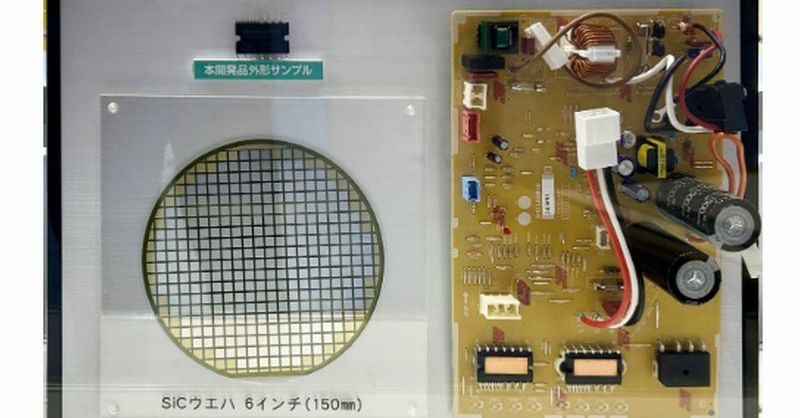Power-Saving Air Conditioners: The Rise of SiC Technology
The quest for energy-efficient cooling solutions is heating up, and a new technology is leading the charge: Silicon Carbide (SiC). Power-saving air conditioners incorporating SiC technology are emerging as a game-changer, promising significant reductions in energy consumption and a smaller carbon footprint. This article delves into the specifics of this innovative technology and explores its impact on the future of air conditioning.
What is SiC Technology and How Does it Improve Air Conditioners?
Silicon Carbide is a wide-bandgap semiconductor material offering superior performance compared to traditional silicon-based components. In air conditioners, SiC is primarily used in the inverter, a crucial component responsible for controlling the compressor's speed and efficiency. Here's how SiC makes a difference:
- Higher Switching Frequencies: SiC allows for much higher switching frequencies in the inverter. This translates to smoother operation, more precise temperature control, and ultimately, less energy wasted.
- Reduced Switching Losses: Traditional silicon inverters experience significant energy losses during switching. SiC's properties minimize these losses, leading to dramatically improved efficiency.
- Smaller and Lighter Inverters: The superior properties of SiC enable the creation of smaller and lighter inverters, contributing to the overall compactness and design flexibility of the air conditioner units.
- Improved Durability and Reliability: SiC components boast higher voltage and temperature tolerance, resulting in longer lifespan and increased reliability.
SiC vs. Traditional Silicon Inverters: A Key Comparison
| Feature | SiC Inverter | Traditional Silicon Inverter |
|---|---|---|
| Efficiency | Significantly Higher | Lower |
| Switching Speed | Much Faster | Slower |
| Size & Weight | Smaller and Lighter | Larger and Heavier |
| Durability | Higher | Lower |
| Cost | Currently Higher (but decreasing rapidly) | Lower |
The Environmental Impact of SiC Air Conditioners
The energy savings offered by SiC air conditioners have significant environmental implications. Reduced energy consumption directly translates to:
- Lower Greenhouse Gas Emissions: Less electricity consumed means fewer greenhouse gases released into the atmosphere, contributing to mitigating climate change.
- Lower Electricity Bills: Consumers benefit from significantly reduced energy costs, making SiC air conditioners a cost-effective, long-term investment.
- Increased Sustainability: SiC technology contributes to a more sustainable approach to cooling, aligning with global efforts towards environmental responsibility.
The Future of SiC in Air Conditioning
While the initial cost of SiC air conditioners might be higher than their traditional counterparts, the long-term savings and environmental benefits are compelling. As production scales up and manufacturing processes become more efficient, the price of SiC-based units is expected to decline, making them increasingly accessible to a wider range of consumers. We can expect to see wider adoption of this technology in both residential and commercial applications in the coming years.
Choosing a SiC Air Conditioner: What to Look For
When searching for an energy-efficient air conditioner, look for these key features:
- Inverter Technology: Ensure the air conditioner utilizes an inverter system.
- SiC Mentioned in Specifications: Manufacturers are increasingly highlighting the use of SiC technology in their product descriptions.
- Energy Efficiency Ratings: Pay close attention to energy efficiency ratings (like SEER ratings in the US or similar regional standards) to compare different models.
The future of cooling is efficient and sustainable, and SiC technology is paving the way. By choosing power-saving air conditioners with SiC inverters, you are making a smart investment that benefits both your wallet and the planet. Learn more about energy-efficient appliances and sustainable living practices by visiting [link to a relevant resource, e.g., government energy agency website].
